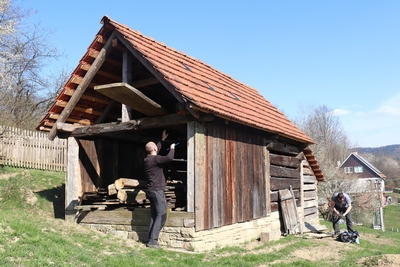Construction activity in the Czech lands has been negatively affected mainly by war in the past, less often by epidemics or famines. The greatest decline in construction activity dates back to the period around the Thirty Years’ War (1618-1648) and 1730-1780, when Maria Theresa ruled the territory. On the other hand, increased building activity was recorded by researchers in the 1820s and in the year of the great storm (1833). This is based on Czech dendrochronological databases and research by scientists from several institutions, including Mendel University in Brno. Photo Credit: Mendel University
Brno, April 7 (BD) – Experts analysed a total of 6,514 wood samples (spruce, fir, pine, oak), for which the date of felling in the forest is clear. This unique database revealed marked differences in construction activity between 1450 and 1950. “Construction activity was clearly influenced by socio-economic and political changes in the country,” said Tomáš Kolář from the Faculty of Forestry and Wood Technology at Mendel University.
The researchers related the analysed data to conflicts, periods of famine, plagues and other epidemics, as well as the impact of climate change and seasonal phenomena such as storms. During the Thirty Years’ War, there was a 34 per cent decline in construction activity due to repeated invasions, including by the Swedish army. The Czech lands also experienced several plagues in this relatively short period. The decline in construction activity correlated with the decline in population. “In the three decades after the war, construction activity in terms of felling of construction timber more than doubled. This is especially true for church buildings,” said Michal Rybníček from Mendel University.
The second period of reduced construction relates to a relatively long period from the 1830s to the 1880s, which is again related to war, but also to typhus, dysentery and famine. The period of the War of the Austrian Succession in the 1840s, after Maria Theresa’s accession to the throne, correlates with the most significant decline, of around 45%. “We also saw a noticeable decline in relation to the famine years of 1770-1772. In contrast, there was increased building activity in the 1820s and 1890s,” Kolář said.
Researchers have revealed a decline in building activity during the Napoleonic Wars, mainly in rural areas. In this case, too, it was a period when war came to the Czech territory, and was also accompanied by epidemics of typhus and dysentery. From the Middle Ages until 1715, plagues also affected the population at regular intervals. Researchers have not recorded similarly significant declines in building activity in connection with epidemics as with wars, but a slight decline was nevertheless evident, particularly in rural areas.
Experts also analysed climatic changes such as wetter and drier periods. These had virtually no effect on construction activity. The opposite is true, for logical reasons, during storms, when construction timber is readily available. “There is a clear link to the higher frequency of strong winds between the 1820s and 1840s with the maximum number of trees felled in 1833,” said Rybníček, who added that the study clearly demonstrated the value of dendrochronological databases for studying human activity in the past.






